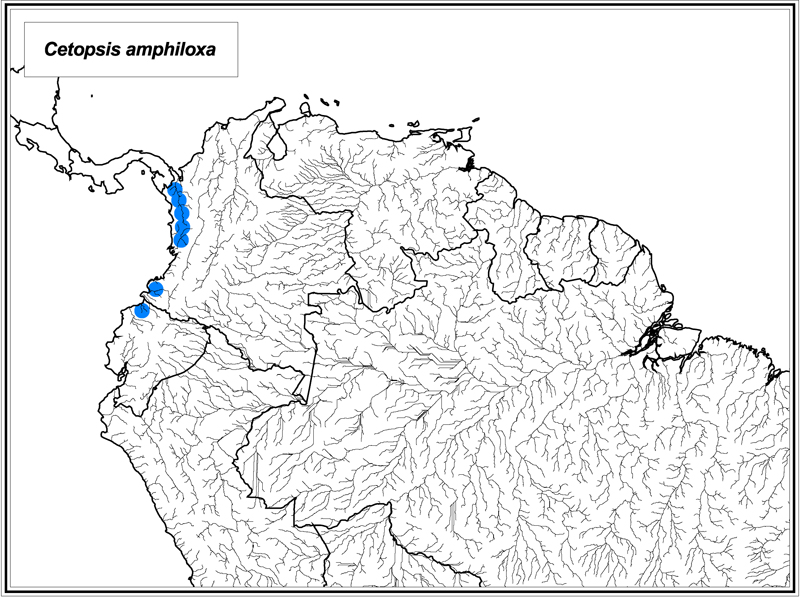
Reproduced from Vari, Ferraris and de Pinna (2005).
Cetopsis amphiloxa (Eigenmann, 1914)
Identification: Cetopsis amphiloxa can be distinguished from all of its congeners by the combination of the presence of an eye, the conical teeth on the vomer and dentary, the rounded posterior nares which is distinctly separated from the contralateral nares by a distance greater than the width of posterior nares, the absence of a dark humeral spot, the presence of very small rather than eye-sized or larger spots on the lateral and dorsal surfaces of the body, the lack of a concentration of dark pigmentation at the base of the dorsal fin, the lack of a band of dark pigmentation along the distal portion of the anal fin, the possession of 29 to 33 total anal-fin rays, 23 to 28 branched anal-fin rays, 10 to 12 precaudal vertebrae, 31 to 33 caudal vertebrae, 41 to 43 total vertebrae, 8, or rarely, 9 pectoral-fin rays, and the lack of a concentration of dark pigmentation basally on the dorsal fin. Maximum size: 188 mm SL.
Range: Cetopsis amphiloxa is known from the northern portions of the Rio San Juan basin and southern sections of the adjoining Rio Atrato basin, both in western Colombia, the Rio Patia basin of southwestern Colombia, and the rivers of northwestern Ecuador.
Information from Vari, R. P., C. J. Ferraris Jr. & M. C. C. de Pinna. 2005. The Neotropical whale catfishes (Siluriformes: Cetopsidae: Cetopsinae), a revisionary study. Neotropical Ichthyology 3:127-238.
